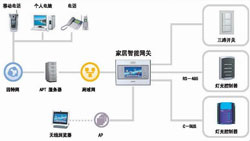Linux OS Customization

Linux OS Framework

The Linux software development usually includes hardware, startup code, kernel, file system and applications.
The Linux kernel mainly contains five parts: process scheduling, memory management, virtual file system, network interfaces and interprocess communication.
These parts will be relative to the hardware including startup code, drivers and part of applications. The drivers can be implemented in kernels or applications.
We offer Linux OS customization service to customers with the aims below:
- Realize System’s Miniaturization
Tailor the standard OS to be as small as possible in order to meet the size requirement of embedded system. Some functions in standard OS are unused; we can cut them and remain the function corresponding to the applications to satisfy the real-time of the system and reduce memory cost.
- Improve real timing
The normal Linux is multi-task operating system which is using time-sharing scheduling strategy aiming at increasing the system throughput rate and doesn’t pay attention to the real-time of system. But embedded environment has high requirement on the real time of system; our tailoring service of Linux can enhance the real time of system.
- Support special hardware
We usually use some special hardware in embedded applications. In order to support these kinds of hardware and peripherals working in Linux, we need to do some tailoring and customization.
- Improve system reliability
The tailored and optimized system has more simple structure, more targeted functions, thus enhancing the reliability of the system.
Linux OS Customization Service Items
Item |
Description |
Written of bootstrap |
The bootstrap includes a primary boot loader and a secondary boot loader. The primary boot loader is designed according to different CPU and boot modes and leads the program to the secondary boot loader. The secondary boot loader makes the transition from booting of CPU to Linux kernel. |
Tailoring and Customization of Linux Kernel |
The Linux kernel mainly contains five parts: process scheduling, memory management, virtual file system, network interfaces and interprocess communication. The tailoring and customization of Linux kernel includes the selection of kernel version and optimization of each part. It is needed to do different modifications and configurations according to CPU hardware resources. |
Drivers development |
Different projects have different hardware resources. We will develop
drivers for applications according to hardware peripherals. |
Porting of file system |
The files in Linux file system are collections of data. The file system is not only including the data but also has the file system structure in ve. All Linux users, files, folders, soft links and file protection information which can be seen in program are stored in it. |
Set up development platform |
To set up development platform includes the installation and offering
of virtual machine, Linux system, cross-compiling environment, QT file
system and all other development tools. |
Application development |
Application development is the last part of Linux project. We need to complete hardware resource allocation and implement the functions according to users’ application requirements. |
After-sales service and
technical support |
The after-sales service and technical support is after the project closed. This is to ensure the service assurance. The complete after-sales service and technical support work is an important factor for customers to select their partners. |
Linux Applications in Industrial Conrols
 |
 |
| HMI |
Smart Grid |
| |
|
 |
 |
| Internet of Things |
Intelligent Gateway |
| |
|
 |
 |
| Smart House |
Network Communication |
| |
|
 |
 |
| Remote Control |
Remote Control |
| |
|
 |
 |
| Self-service Terminals |
Access Control and Management |
| |
|
 |
 |
| Building Security and Monitoring |
Industrial Automatic Control |
| |
|
 |
 |
| Handheld Terminals |
Automotive Entertainment System |
|